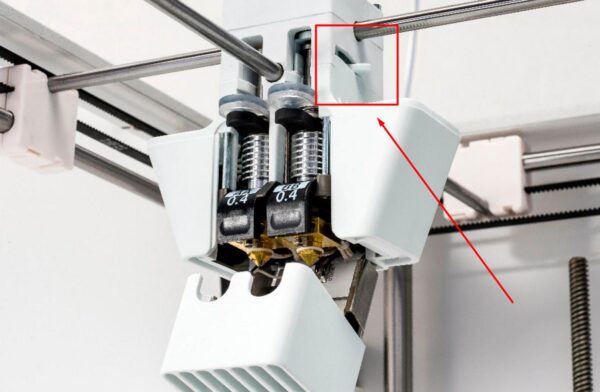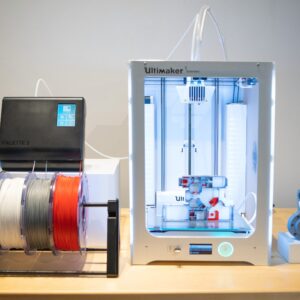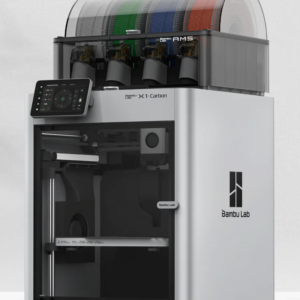 One of the most advances in the 2020’s has been the incorporation of multiple materials. In the 2010’s, there were few printers under $10k that could work with multiple materials reliably and economically. In fact, the UR Information Services Ultimaker 3 was the first UR 3D printer with that capability, and the printer cost ~$3.5k. The challenge is to either develop a single extruder that could extrude multiple materials (such as plastic filament) or align multiple extruders (one for each filament) with a tolerance of ~100 microns (millionths of a meter). Ultimaker chose the latter such that they developed an extruder lift mechanism (see red arrow in the image to the right) that raises or lowers one print head with exact and repeatable positioning. That lift switch is physical “flipped” each time the printer needs to switch between the two filaments.
One of the most advances in the 2020’s has been the incorporation of multiple materials. In the 2010’s, there were few printers under $10k that could work with multiple materials reliably and economically. In fact, the UR Information Services Ultimaker 3 was the first UR 3D printer with that capability, and the printer cost ~$3.5k. The challenge is to either develop a single extruder that could extrude multiple materials (such as plastic filament) or align multiple extruders (one for each filament) with a tolerance of ~100 microns (millionths of a meter). Ultimaker chose the latter such that they developed an extruder lift mechanism (see red arrow in the image to the right) that raises or lowers one print head with exact and repeatable positioning. That lift switch is physical “flipped” each time the printer needs to switch between the two filaments.
Recent printers (see gallery below) such as the Prusa XL printer have that capability by default. There are other add-on devices that give that capability such as the Pallette 2 (connected to an Ultimaker 3 Extended printer in the gallery below) and the Bambu X1 Carbon printer with the AMS unit that each provide the same functionality. It’s important to note that these devices not only allow “multiple colors” to be used but also different kinds of filament together as well as water-soluble filament that can allow much more complex prints.
Watch out for these 3D printers coming to campus in the next couple years. In fact, some of the printers acquired in the last year can accommodate those multi-material add-on tools.



